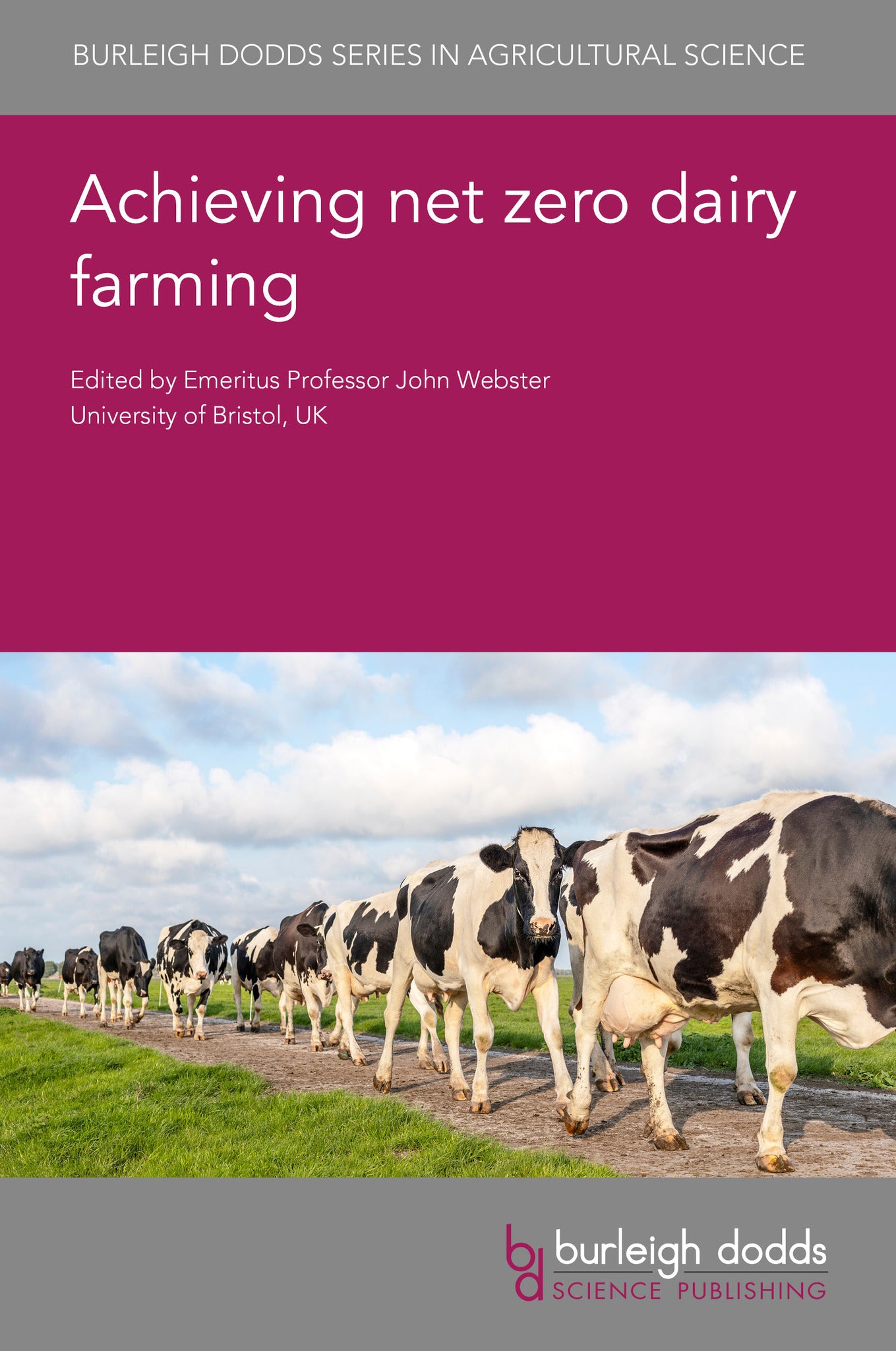We're sorry. An error has occurred
Please cancel or retry.
Achieving net zero dairy farming

To meet the targets outlined in the 2015 Paris Agreement, many countries are actively working towards reaching climate neutrality and achieving net zero by 2050. With the livestock sector estimated to contribute approximately 11-17% of global greenhouse gas emissions, more research and innovation is required to understand the cause of these emissions and how they can be reduced.
Achieving net zero dairy farming provides a detailed insight into the fundamental processes within the dairy cow and those that occur on dairy farms that contribute to and reduce greenhouse gas emissions. The book also considers the range of strategies which can be implemented to support the transition to net zero, including improving housing and housing management, supplementing diets with methane-inhibiting feed additives and optimising manure/slurry application.

TECHNOLOGY & ENGINEERING / Agriculture / Animal Husbandry, Dairy farming, TECHNOLOGY & ENGINEERING / Agriculture / Sustainable Agriculture, SCIENCE / Global Warming & Climate Change, Sustainable agriculture, Climate change

Part 1 Fundamentals and measurement on the dairy farm
- 1.Overall nutrients and energy flows within the dairy cow: John Webster, University of Bristol, UK;
- 2.Advances in understanding methane production in the dairy cow: Mohammed Ramin, Swedish University of Agricultural Sciences, Sweden;
- 3.Assessing greenhouse gas (GHG) emissions from different types of dairy farm: C. Alan Rotz, USDA-ARS, USA;
- 4.Water use on dairy farms: António Monteiro, Polytechnic Institute of Viseu, Portugal;
- 5.Measuring methane emissions from individual dairy farms: Luis O. Tedeschi, Texas A&M University, USA;
Part 2 Strategies to achieve net zero: Supporting the dairy cow
- 6.Genetics and breeding for reduced methane emissions: Anouk van Breukelen, Wageningen University & Research, The Netherlands;
- 7.Improving individual animal productivity/feed conversion efficiency: Robin R. White, Virginia Tech, USA;
- 8.Improving housing and housing management to reduce/manage emissions and waste: Pol Llonch, Universitat Autònoma de Barcelona, Spain;
- 9.Use of methane-inhibiting feed additives/inhibitors: John Newbold, SRUC, UK;
Part 3 Strategies to achieve net zero: System-level improvements
- 10.Manure management and processing: Alice Rocha, University of California-Davis, USA;
- 11.Optimising manure/slurry application on the farm: Shabtai Bittman, Agriculture and Agri-Food Canada, Canada;
- 12.Methane utilisation on dairy farms: Sigrid Kusch-Brandt, University of Southampton, UK;
- 13.Integrating dairy farming and crop production: Susanne Wiesner, University of Wisconsin-Madison, USA;
Part 4 Conclusion
- 14.Achieving net zero: weighing the options arising from new understanding: John Webster, University of Bristol, UK;




